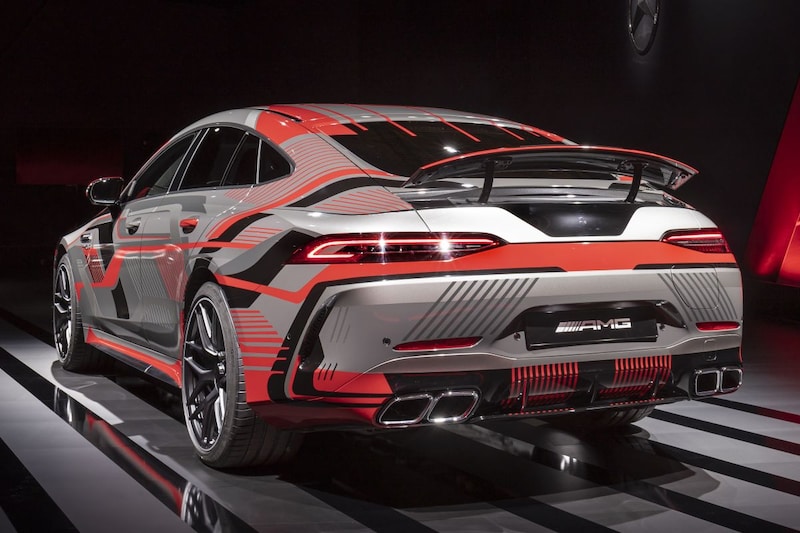
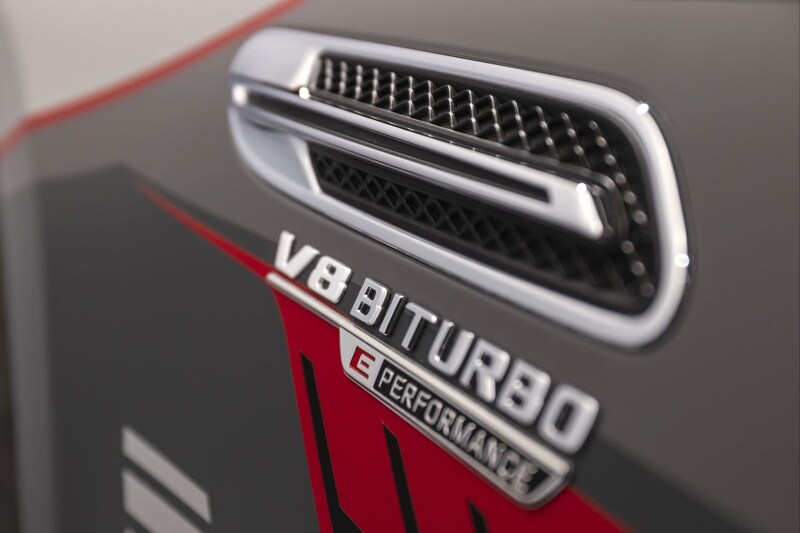
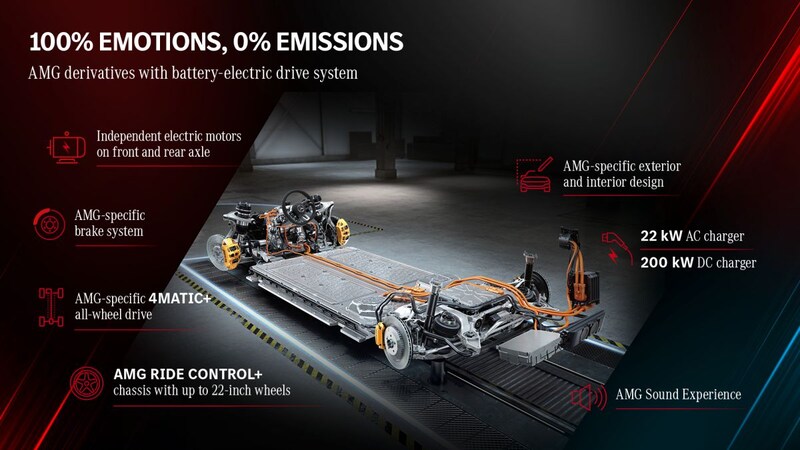


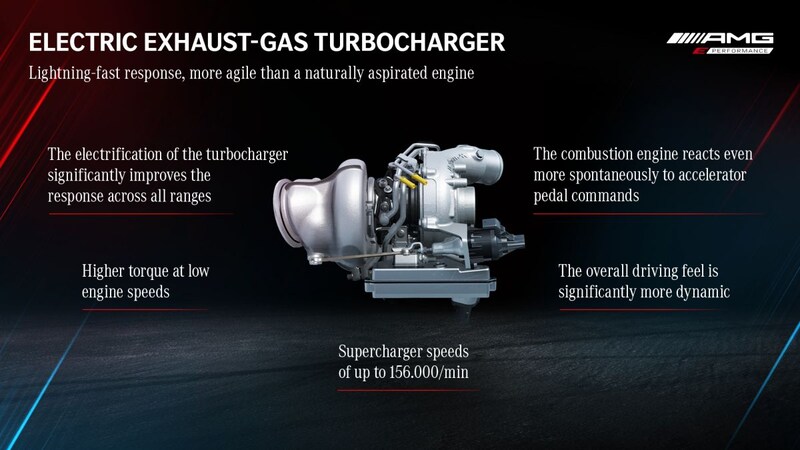
Mercedes’ performance label AMG is seriously committed to electrification. Before the end of the year, we will be introduced to both plug-in hybrid and fully electric models that should provide blood-curdling performance. Even so, combustion engine technology is not forgotten. Count on plug-ins with more than 800 hp and 1,000 Nm.
The first fully electric AMG models will be based on the Mercedes-EQ cars operating in the same segment as the current Mercedes-AMG E-Class, sharing their platform architecture with the soon to be released EQS. The performance of the AMG EQs is on a par with that of the current 43 and 53 AMG models. The fast EVs have a permanently energized synchronous motor at the front and rear, whereby a continuous distribution of the torque takes place. As a result, the electric AMGs are not inferior to the current AMG models with four-liter biturbo V8. For a sprint from a standstill to 100 km / h, AMG speaks of times of less than four seconds. When the electric motors reach their maximum speed of 18,000 revolutions per minute, the speedometer will indicate 250 km / h.
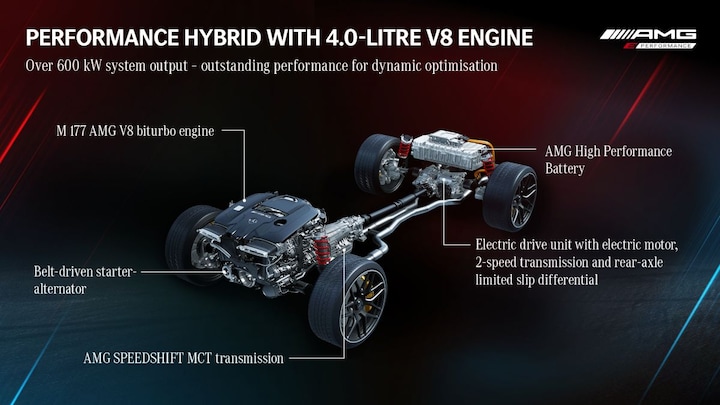
Two-stage rocket
For its plug-ins, AMG has developed a modular powertrain strategy under the name E Performance, which can be used in combination with both four and eight cylinders. At the center is an Electric Drive Unit (EDU) mounted on the rear axle. In addition to a compact battery pack and power electronics, this EDU consists of a synchronous motor with a two-speed gearbox that directly drives the limited slip differential. Depending on the model series, the electric motor peaks at 150 kW (204 hp) and 320 Nm. The electronically controlled gearbox does not work with a planetary gear system (that would take up too much space) but is a dog box with claw clutches, the electric motor provides the synchronization. Switching from 1 to 2 takes place at a speed of approximately 140 km / h when the e-motor makes about 13,500 revolutions per minute. Because a single fixed transmission has not been chosen, it is possible to work with a more compact motor, while at low speeds you can profit from high torque.
Parallel universe
Whether it is a plug-in with V8, as in the AMG GT 4-door, or a four-cylinder PHEV as can be expected in the new C-class, the combustion engine works in both cases together with AMG’s own nine-speed automatic transmission that is then sent via the cardan shaft drives the differential. Indeed, the electric motor and the combustion engine can independently drive the rear differential, they work in parallel. Because the cars are four-wheel drive, the electric motor (for example, in the case of rear wheels spinning) can deliver power from the outside of the rear differential through the propeller shaft to the front wheels. For the variant with the two-liter four-cylinder, AMG speaks of a system power of more than 650 hp and with the V8 it is even more than 800 hp.
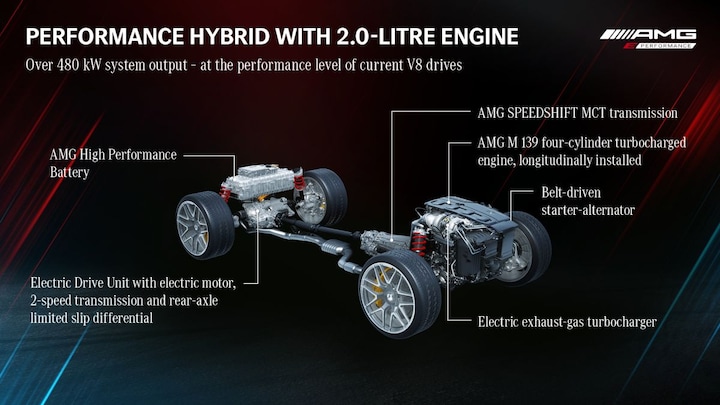
The four-cylinder is also a further development of the M139 engine that we know from the A 45 AMG, only then placed longitudinally. With the help of, among other things, an electric turbo (a turbo with an electric motor on the shaft between the turbine and the compressor for super-fast pressure build-up), the two-liter engine has to peak at 450 hp. AMG does not want to reveal yet what kind of acceleration times the plug-in hybrids are capable of, but we are counting on serious fireworks!